essential app engine [electronic resource] building high performance java apps with google app engine
Bạn đang xem bản rút gọn của tài liệu. Xem và tải ngay bản đầy đủ của tài liệu tại đây (4.83 MB, 343 trang )
ptg6899256
ptg6899256
Essential
App Engine
ptg6899256
T
he Developer’s Library Series from Addison-Wesley provides
practicing programmers with unique, high-quality references and
tutorials on the latest programming languages and technologies they
use in their daily work. All books in the Developer’s Library are written by
expert technology practitioners who are exceptionally skilled at organizing
and presenting information in a way that’s useful for other programmers.
Developer’s Library books cover a wide range of topics, from open-
source programming languages and databases, Linux programming,
Microsoft, and Java, to Web development, social networking platforms,
Mac/iPhone programming, and Android programming.
Visit developers-library.com for a complete list of available products
Developer’s Library Series
ptg6899256
Essential
App Engine
Building High-Performance
Java Apps with Google
App Engine
Adriaan de Jonge
Upper Saddle River, NJ • Boston • Indianapolis • San Francisco
New York • Toronto • Montreal • London • Munich • Paris • Madrid
Capetown • Sydney • Tokyo • Singapore • Mexico City
ptg6899256
Many of the designations used by manufacturers and sellers to distinguish their products
are claimed as trademarks. Where those designations appear in this book, and the
publisher was aware of a trademark claim, the designations have been printed with initial
capital letters or in all capitals.
The author and publisher have taken care in the preparation of this book, but make no
expressed or implied warranty of any kind and assume no responsibility for errors or
omissions. No liability is assumed for incidental or consequential damages in connection
with or arising out of the use of the information or programs contained herein.
The publisher offers excellent discounts on this book when ordered in quantity for bulk
purchases or special sales, which may include electronic versions and/or custom covers
and content particular to your business, training goals, marketing focus, and branding
interests. For more information, please contact:
U.S. Corporate and Government Sales
(800) 382-3419
For sales outside the United States please contact:
International Sales
Visit us on the Web: informit.com/aw
Library of Congress Cataloging-in-Publication Data
Jonge, Adriaan de, 1979-
Essential app engine : building high-performance Java apps with Google App engine /
Adriaan de Jonge.
p. cm.
Includes index.
ISBN 978-0-321-74263-6 (pbk. : alk. paper)
1. Computer software—Development. 2. Software architecture. 3. Java (Computer pro-
gram language) 4. Google Apps. I. Title.
QA76.76.D47D425 2012
005.1—dc23
2011030789
Copyright © 2012 Pearson Education, Inc.
All rights reserved. Printed in the United States of America. This publication is protected by
copyright, and permission must be obtained from the publisher prior to any prohibited
reproduction, storage in a retrieval system, or transmission in any form or by any means,
electronic, mechanical, photocopying, recording, or likewise. To obtain permission to use
material from this work, please submit a written request to Pearson Education, Inc.,
Permissions Department, One Lake Street, Upper Saddle River, New Jersey 07458, or you
may fax your request to (201) 236-3290.
ISBN-13: 978-0-321-74263-6
ISBN-10: 0-321-74263-X
Tex t pri nt ed in th e Uni te d Sta te s on rec yc le d pap er at RR Do nn el ley in Cr aw fo rd sv il le , Indi an a.
First printing, October 2011
Editor-in-Chief
Mark Taub
Acquisitions Editor
Tri na Ma cD on al d
Development Editor
Michael Thurston
Managing Editor
John Fuller
Project Editor
Anna V. Popick
Copy Editor
Carol Lallier
Indexer
Jack Lewis
Proofreader
Kelli Brooks
Technical
Reviewers
Joseph Annuzzi
Romin Irani
Alex Moffat
Editorial Assistant
Olivia Basegio
Cover Designer
Gary Adair
Compositor
LaurelTech
ptg6899256
❖
To e ver yone who is c h a s ing t h eir d r eams…
❖
ptg6899256
This page intentionally left blank
ptg6899256
Contents at a Glance
Introduction xix
Acknowledgments xxvii
About the Author xxix
I: An App Engine Overview 1
1 Setting Up a Development Environment 3
2 Improving App Engine Performance 17
II: Application Design Essentials 29
3 Understanding the Anatomy of a Google App Engine
Application 31
4 Data Modeling for the Google App Engine
Datastore 45
5 Designing Your Application 57
III: User Interface Design Essentials 67
6 Presenting the User Interface with HTML5 69
7 Fine-Tuning the Layout Using CSS3 85
8 Adding Static Interactions Using JavaScript 99
9 Adding Dynamic Interactions Using AJAX 113
IV: Using Common App Engine APIs 127
10 Storing Data in the Datastore and Blobstore 129
11 Sending and Receiving E-Mail 155
12 Running Background Work with the Task Queue API
and Cron 171
13 Manipulating Images with the App Engine Image
Service 187
14 Optimizing Performance Using the Memory
Cache 203
ptg6899256
15 Retrieving External Data Using URL Fetch 215
16 Securing a Web Application Using Google Accounts,
OpenID, and OAuth 229
17 Sending and Receiving Messages Using XMPP 241
V: Application Deployment 253
18 Improving the Development Process 255
19 Assuring Quality Using Measuring Tools 263
20 Selling Your Application 277
Index 289
ptg6899256
Contents
Introduction xix
Acknowledgments xxvii
About the Author xxix
I: An App Engine Overview 1
1 Setting Up a Development Environment 3
Working with Eclipse Tools 3
Installing Plugins in Eclipse 4
Starting a New App Engine Project 7
Starting the Development Server 9
Deploying to the Online App Engine 11
Deploying from the Command Line 14
Starting the Development Server Command Line 15
Deploying to the App Engine Command Line 15
Summary 16
2 Improving App Engine Performance 17
Performing in the Cloud 17
Comparing the App Engine to Traditional Web
Applications 18
Optimizing Payments for Resources 18
Measuring the Cost of Class Loading 18
Timing a Servlet That Contains a Library 19
Timing a Servlet That Does Not Contain a
Library 21
Reducing the Size of web.xml 22
Avoiding Cold Startups 24
Reserving Instances with Always On 24
Preloading Classes Using Warm-Up Requests 24
Handling Concurrent Requests with Thread-Safe
Mode 25
Handling Memory Intensive Requests with
Backends 25
ptg6899256
x
Contents
Improving Performance in General 25
Optimizing Your Data Model for Performance 25
Avoiding Redundant Processing Using Cache 25
Postponing Long-Running Tasks Using the Task
Queue 26
Improving Page Load Performance in the
Browser 26
Working with Asynchronous APIs 26
Optimizing Your Application before Deployment 27
Summary 27
II: Application Design Essentials 29
3 Understanding the Anatomy of a Google App Engine
Application 31
Uploading Files for Dynamic Deployment 31
Setting Up the Directory Structure 33
Specifying Deployment Parameters 34
Specifying Repeating Tasks 37
Specifying Datastore Indexes 38
Blacklisting IP Ranges 38
Configuring Log Levels 39
Configuring Task Queues 39
Securing URLs 40
Configuring the Administration Panel 41
Setting Application Basics 41
Setting the Current Version 42
Adding Users 42
Enabling Billing 43
Summary 44
4 Data Modeling for the Google App Engine
Datastore 45
Moving Away from Relational Storage 45
Denormalizing Data 45
Aggregating Data without Joins 46
Designing Schemaless Data 47
ptg6899256
xi
Contents
Modeling Data 47
Designing at a Micro Level 47
Choosing Properties 48
Separating Entities 49
Creating and Maintaining Relationships among
Entities 50
Maintaining One-to-Many and Many-to-Many
Relationships 51
Working with Data 52
Performing Transactions 52
Performing Queries 53
Creating Indexes 53
Upgrading When the Datastore Is Involved 54
Summary 55
5 Designing Your Application 57
Gathering Requirements 57
Choosing a Toolkit 58
Choosing a Framework 58
Choosing a Template Engine 60
Choosing Libraries 60
Making Design Choices 61
Modeling Data 62
Modeling URLs 64
Handling Page Flow 65
Summary 65
III: User Interface Design Essentials 67
6 Presenting the User Interface with HTML5 69
Introducing HTML5 69
Using Basic HTML5 Elements 70
Drawing Images Using the Canvas 72
Dragging and Dropping Items into Pages 74
Improving Form Elements 76
ptg6899256
xii
Contents
Detecting a User’s Geolocation 77
Storing Data on the Client Side 78
Storing Data across Sessions 78
Storing Session Data 80
Querying Structured Data Using a Local SQL
Database 81
Summary 83
7 Fine-Tuning the Layout Using CSS3 85
Selecting Elements Using CSS3 85
Understanding Specificity Calculation 85
Using IDs 86
Selecting Classes 88
Selecting Pseudo-Classes 88
Selecting Attributes 89
Selecting Elements 90
Selecting Pseudo-Elements 91
Using New Graphical Effects in CSS3 92
Rounding Edges 94
Using 2D Animations 94
Using 3D Animations 96
Summary 98
8 Adding Static Interactions Using JavaScript 99
Setting Up a Simplistic Example 99
Cleaning Up HTML Using Unobtrusive JavaScript 102
Reducing JavaScript Dependence by Progressively
Enhancing the HTML 106
Optimizing Performance Using Event Delegation 109
Avoiding Global Variables 110
Summary 112
9 Adding Dynamic Interactions Using AJAX 113
Using Classic AJAX without Frameworks 113
Communicating with the Server Using XML 114
Communicating with the Server Using JSON 116
Communicating with the Server Using HTML 118
ptg6899256
xiii
Contents
Using Google App Engine’s Channel API 120
Opening a Channel from the Server 120
Handling Messages on the Client 122
Summary 125
IV: Using Common App Engine APIs 127
10 Storing Data in the Datastore and Blobstore 129
Processing Data Synchronously 129
Storing Data Synchronously 130
Querying Data Synchronously 133
Retrieving Data Synchronously 135
Processing Data Asynchronously 136
Storing Data Asynchronously 137
Querying Data Asynchronously 139
Retrieving Data Asynchronously 140
Setting Up Transactions 141
Using Multitenancy to Introduce Namespaces 144
Storing and Retrieving Large Files 146
Storing Large Files in the Blobstore 146
Querying for the Content of Blobstore 149
Retrieving Files from the Blobstore 150
Uploading Bulk Data Using the Remote API 151
Summary 153
11 Sending and Receiving E-Mail 155
Sending Confirmation E-Mails with HTML and
Attachments 155
Parameterizing the Mail Body 158
Securing the Servlet 158
Logging Sent Mails on the Development Server 159
Using the JavaMail API as an Alternative 159
Comparing the Low-Level API to JavaMail 161
Receiving E-Mail 161
Configuring the Servlet to Receive Mail 161
Implementing the Servlet to Store Received
Mail 162
ptg6899256
xiv
Contents
Reading E-Mail without the JavaMail API 165
Failures 167
Considering Performance and Quota 167
How Long Does It Take to Send an E-Mail? 167
What Is the Overhead on a Cold Instance? 168
How Does the Mail Receiver Perform? 168
Summary 169
12 Running Background Work with the Task Queue API
and Cron 171
Tas k Qu eui ng 171
Queuing Send Mails 172
Configuring Task Queues 174
Managing Quota 174
Specifying Additional Options 175
Tak ing Adv anta ge o f Task Queu es 1 79
Scheduling Tasks Using Cron 180
Configuring Tasks Using cron.xml 180
Tak ing Adv anta ge o f Cron 18 2
Reading HTTP Headers 182
Summary 185
13 Manipulating Images with the App Engine Image
Service 187
Minimizing the Use of the Image API 187
Reading and Writing Images 187
Reading from User Input 187
Writing to the Datastore 190
Reading from the Datastore 191
Writing to User Output 193
Reading from a File 193
Performing Simple Manipulations 195
Creating Thumbnails of Large Images 195
Cropping Images 197
Rotating Images 198
Flipping Images 198
ptg6899256
xv
Contents
Performing Advanced Manipulations 198
Summary 201
14 Optimizing Performance Using the Memory
Cache 203
Using the Cache API for Basic Purposes 203
Considering the Pitfalls of a Cache 203
Caching String Values 204
Implementing a Caching Strategy 206
Reducing App Engine Load Using ETag Headers 206
Working with Fine-Grained Cache 209
Implementing Serializable 209
Caching Query Results in Raw Entity Format 210
Maintaining a Cache 210
Invalidating Cache Items 211
Clearing the Cache 212
Using Other Cache Utility Methods 213
Putting and Getting Multiple Values 213
Registering Error Handlers 213
Incrementing Values 213
Using JSR 107 as an Alternative API 214
Summary 214
15 Retrieving External Data Using URL Fetch 215
Reading URLs Using GET Requests 215
Using the Standard URL Fetch API 215
Using the Low-Level URL Fetch API 217
Reading Results 218
Interpreting Results 218
Writing to Memory Cache 219
Writing to the Datastore 219
Adding Options to URL Fetch 219
Controlling Timeouts 219
Handling Exceptions Gracefully 221
Posting Form Data 223
Fetching URLs Asynchronously 224
ptg6899256
xvi
Contents
Consuming Web Services 226
Accessing RESTful Services 226
Communicating with SOAP 226
Considering Security 226
Using HTTPS 227
Using Open Ports 227
Summary 227
16 Securing a Web Application Using Google Accounts,
OpenID, and OAuth 229
Authenticating Users with Google Accounts 229
Authenticating Users with OpenID 232
Providing Access to Third Parties Using OAuth 235
Securing URLs in web.xml 237
Enforcing Authentication 238
Enforcing Secure Protocols 238
Security Considerations 239
Validating Input 239
Configuring Multitenancy 239
Storing Personal Data 240
Summary 240
17 Sending and Receiving Messages Using
XMPP 241
Sending Messages Using XMPP 241
Receiving Messages Using XMPP 244
Receiving Subscriptions 246
Receiving Presence 249
Summary 251
V: Application Deployment 253
18 Improving the Development Process 255
Optimizing the Development Process for the
Internet 255
Thinking Like a Project Manager 256
Reducing Overhead 256
Knowing Your End Goal 256
ptg6899256
xvii
Contents
Cutting Away Unnecessary Activities 257
Improving Functionality 258
Setting Priorities 259
Planning Iterations 259
Practicing Experiment-Driven Development 260
Making Changes Gradually 260
Measuring Quality 260
Optimizing Developer Productivity 261
Performing Rituals 261
Using New Programming Languages 261
Managing Time and Surroundings 261
Summary 262
19 Assuring Quality Using Measuring Tools 263
Tes ting on a P rod uct ion Env iro nme nt 263
Putting the Added Value of Testing in
Perspective 263
Performing a Sanity Check 264
Minimizing Damage from Failures 264
Thinking Differently about Usability 265
Choosing Functionality over Appearance 265
Optimizing Usability by Analyzing Analytics 265
Checking Availability with the Capabilities API 265
Logging Unexpected Behavior 269
Profiling Continuously on Production 271
Measuring User Response to Your Interface 273
Summary 275
20 Selling Your Application 277
Determining How to Approach Sales 277
Knowing Your Audience 277
Reaching Your Audience 278
Making the News 278
Writing Articles 278
Blogging 279
Writing on Twitter 280
Publishing Facebook Pages 281
Connecting through Facebook Apps 282
ptg6899256
xviii
Contents
Advertizing on Google Apps Marketplace 282
Using AdWords 284
Optimizing Your App for Search Engines 285
Using Social Bookmarking Sites 285
Attracting Customers Using Mobile App Stores 285
Converting Prospects into Paying Customers 286
Handling the Payment Process 286
Summary 287
Index 289
ptg6899256
Introduction
A single hype is not enough to change the world. But multiple hypes together can
change it as long as they are part of a bigger trend.
This book discusses more than one hyped technology: cloud computing, NoSQL, and
HTML5. The technologies in this book combine well with other hyped technologies:
functional languages (Scala) and connected devices (iPhone, iPad, Android).
The Internet is changing the world. That is old news, yes, but because it’s old news, you
may easily overlook the Internet’s ongoing dynamics and influences. A good indicator that
you are missing the cybership is if you are still stuck on Spring and Hibernate. Frameworks
solving yesterday’s problems are blocking the way to handle tomorrow’s challenges.
The Google App Engine is a perfect fit with current Internet trends. Reading this
book gives you a head start with upcoming technologies. This Introduction describes
how both the App Engine and this book fit in the current trends.
Analyzing Internet Trends
To a n a l y z e t h e c u r r e n t I n t e r n e t t re n d s , yo u n e e d t o t a ke a f ew s t e p s b a c k i n t i m e a n d s e e
what has happened in the past two decades.
Starting in the Nineties
Let’s start with the early 1990s. At first, the World Wide Web was used mostly to serve static
HTML pages. The best way to serve a dynamic web application was to configure a /cgi-
bin directory connecting to Perl scripts or binary programs that redirected the output to
the web visitor. Web applications were nowhere near as mature as classic office applications.
By the late nineties, though, developers were incorporating best practices from classic office
automation into web applications, and the Internet soared with the dot-com bubble.
Switching to the New Millennium
In the early 2000s, web programmers realized that a Model-View-Controller pattern was
not such a bad idea after all. And around 2005, Asynchronous JavaScript and XML
(AJAX) helped make web applications more interactive. By 2008, web applications and
office applications were on the same maturity level, sharing many of the same
technologies, such as SQL databases and heavy application servers. Some UI libraries
even tried to mimic classic Windows interfaces, with the ultimate goal of bringing a
not-so-user-friendly interface concept into the browser.
ptg6899256
xx
Introduction
Analyzing Current Developments
Right now, you can see the start of a trend in which Internet technology surpasses the
maturity level of classic office automation. The frontrunners in Internet technology are
critically investigating all parts of their systems and analyzing their designs for fit with
the requirements of the current Internet environment. New technologies are being
developed from scratch with the Internet’s scalability requirements as a first priority.
It won’t be long until office automation will have trouble keeping up with Internet
technologies. That is the point where office automation will start adopting the best
practices from the Internet instead of the other way around.
Replacing SQL Databases with NoSQL
Relational databases are one of the most widely used technologies in classic office
automation. They are mature, well standardized, taught in most schools and universities,
and available in all sizes. However, they were designed at a time when storage was still
expensive, the number of users was limited to the number of employees in a single
company, and the focus of their use was on transaction processing.
Relational databases do not scale well. They were designed as central storages
operating efficiently enough to handle most of their work alone. In larger environments,
their capabilities can be expanded using horizontally or vertically distributed databases or
load-balanced setups that replicate data among multiple machines. Usually this
functionality requires expensive software, machinery, and specialized knowledge, though,
so at the end of the day, relational databases are still limited.
Switching to NoSQL with the Google App Engine Datastore
A common characteristic of NoSQL databases is high scalability. NoSQL databases are
designed specifically with the requirements of the Internet in mind. To serve millions of
visitors around the world in a few hundred milliseconds, you need functionality beyond
that of relational databases. If you do not need to serve that many visitors, you may still
consider relational databases because of their consistency and transactional integrity. You
should choose NoSQL only if the advantages match your requirements.
Google App Engine offers the datastore as NoSQL storage. It allows you to store
entities, each with a set of key-value pairs. A value can also consist of an array of values.
Benefits of the App Engine offering are that you need not worry about system
administration, and its APIs easily integrate with the rest of the platform.
When you start working with the App Engine datastore, you discover that NoSQL
databases have additional advantages over the classic SQL offerings. The APIs are less
awkward to use than JDBC APIs.
Moving Away from Object Relational Mapping
Object relational mapping has always been painful. Doing the mapping yourself is so
cumbersome that it scares developers into using heavy and code-intensive frameworks
ptg6899256
xxi
Computing in the Cloud
like Hibernate, Java Data Objects (JDO), and the Java Persistence API (JPA). Choosing
not to map relational structures to objects is virtually impossible. It would imply keeping
JDBC connections open longer than necessary.
NoSQL databases relieve you from the burden of object relational mapping. If you
insist, you can still map your datastore’s structures to Java objects. This does not always
make sense though. This book shows many examples of datastore entities being directly
passed to an HTML template. The result is clean, simple, and efficient code.
Considering Alternative NoSQL Solutions
Examples of other NoSQL databases are Amazon SimpleDB, Riak, Voldemort, Microsoft
Tr inity, Hadoop, Cassandra, CouchDB, MongoDB, Kyot o C ab in et , Hy pe r ta ble, GraphDB,
Redis, Google Pregel, and Google BigTable (the underlying platform of the App Engine’s
datastore). Each of these products has its own characteristics. Some are key-value storages,
graph storages, document storages, or variants of these structures.
After reading this book and practicing with App Engine datastore, you should
investigate the various NoSQL initiatives for your work on platforms other than the App
Engine. Many of the advantages of the datastore on the App Engine platform can also be
found outside the App Engine. This is all part of a larger trend, after all.
Computing in the Cloud
Cloud computing changes the way you write your applications. Classic enterprise
applications usually optimize performance by taking a performance hit at startup time. If
your application is restarted only once every few months, that can be an acceptable
strategy. However, on some cloud platforms, including Google App Engine, your
applications may be started and stopped multiple times an hour. This means that you
should optimize your application to start up extremely fast, which may require throwing
out all heavyweight frameworks, like Spring or Grails.
Maintaining Systems in the Cloud
Hosting applications in the cloud means hosting without worrying about the underlying
infrastructure. In all cloud offerings, you pay only for what you use. This is especially
interesting if your site experiences sudden high spikes in visitors. In classic setups, you
require a machine park that is standing still most of the time, waiting for the exceptional
spike when it really needs to work.
The advantage of the App Engine over other cloud initiatives is that it scales
automatically. You need not give orders to start up additional instances of your
application. If you are worried about controlling your budget, you can set a maximum
on your every day expenses. This helps you prevent bankruptcy after a distributed
denial-of-service (DDOS) attack.
The App Engine does not expose details of the underlying operating system to its
users. Cloud services like Amazon Elastic Compute Cloud (EC2) and Microsoft Azure let
ptg6899256
xxii
users maintain their own instance of an operating system. This is a trade-off between
freedom and maintenance costs.
The App Engine could be characterized as a software developer’s cloud platform,
whereas EC2 could be characterized as a system administrator’s cloud platform. Microsoft
Azure is most interesting if your company is already running on a full Microsoft stack. It
fits best with the .Net developer community, although it must be mentioned that
Microsoft also targets Java developers with its Azure platform.
Make an informed decision about which platform you’ll use before you start develop-
ing, because some lock-in is involved. Don’t choose the App Engine just because it’s
Google or because you liked the cover of this book. Choose it because you want a well-
integrated platform that relieves you from the burden of system administration and
automatically scales to sudden changes in demand even while you sleep.
Connecting with Other Cloud Offerings
Yo u c a n a l s o c o n s i d e r c l o u d c o m p u t i n g f r o m a n o n t e c h n i c a l p e r s p e c t i ve . W h e n m a n a g e r s
discuss cloud computing, they are usually talking about Google Apps rather than Google
App Engine. Google Apps includes Google Docs, Gmail, Google Calendar, and Google
Sites for Business. The App Engine is just a technical platform on which software vendors
can host their applications. Managers may not be interested in such hosting. They are
interested in the applications.
The Google Apps Marketplace helps software vendors sell applications that integrate
well with Google Apps. The Google App Engine is the ideal platform for hosting
applications that integrate with Google Apps. Hosting in Google’s cloud may also help
when selling your application to customers who already use Google Apps.
Adopting HTML5
HTML4 and XHTML1 have ruled the world for a long time. Now it is time to move
on. The World Wide Web made a shift from serving documents to serving web
applications. And even though documents will probably be served until the end of time,
the real technical challenge is in serving user-friendly web applications.
We b inter f a ces are more easil y understoo d by the avera g e user t han classi c W i ndows
interfaces. In operating systems, you can see a trend toward simplifying client-side
interfaces to work similarly to web interfaces. Smart phones show similar advancements.
Smart phone vendors are trying to keep up with the simplicity of Apple’s iPhone.
HTML4 and XHTML1 have some limitations that quickly become awkward when
using them to offer web applications. A lack of descriptive HTML element names is just
a minor flaw that leads to overly complicated Cascading Style Sheet (CSS) files. HTML5
fixes this problem. More interesting are the additional JavaScript APIs offered with the
HTML5 specification.
Using HTML5 offers many benefits. For example, consider the File Chooser dialog
when uploading a file. HTML5 allows you to drag and drop files into your browser. You
Introduction
ptg6899256
xxiii
Discussing Trends Out of Scope for This Book
can try this by adding an attachment in Gmail using drag and drop. Another example is
the use of cookies or heavy server-side sessions. HTML5 offers session storage, local
storage, and IndexedDB to store about 5MB of data on the client for later reuse. HTML5
allows you to make drawings on the client side using the Canvas.
Finally, the support for HTML5 on mobile and connected devices is better than you
might expect. Some of the features of HTML5 are particularly useful on handheld
devices. The lack of Flash support on iPhone and iPad is well compensated by HTML5.
And possibly one of the most interesting features of HTML5 on a mobile device is the
ability to ask for the user’s location. If the user allows it, you can use it to customize
search results to the things most relevant in that particular area.
Discussing Trends Out of Scope for This Book
Essential App Engine: Building High-Performance Java Apps with Google App Engine discusses
some of the latest trends in cloud computing with NoSQL and HTML5. Some related
trends are beyond the scope of this book, but with some additional reading, you can
combine these trends with the technologies discussed here.
Serving Apps on Connected Devices
The examples in this book assume that the visitors are accessing the application using a
web browser or a mobile browser. All examples target HTML, CSS, and JavaScript.
In addition to browsers, applications are increasingly served through platform-specific
applications running on the iPhone, iPad, Android, Windows Phone, or BlackBerry.
Numerous books on developing applications for these platforms are available.
From an App Engine perspective, requests from mobile applications are in many ways
similar to AJAX requests made from browsers. You can serve JSON (JavaScript Object
Notation) strings over a RESTful interface, providing the same data in a format that is
easily read by the applications.
Moving to New JVM Languages
Java has been called the Cobol of the 21st century. Without arguing against that, the
examples in this book are nevertheless in Java. A seeming trend away from the Java
language does not necessarily imply moving away from the Java Virtual Machine (JVM).
Most popular new languages like Scala and Clojure compile to JVM bytecode.
At this point, the Java language is still the largest language on the JVM platform.
Despite its growing popularity, Scala has nowhere near the user base of Java yet. And
even for those who are interested in other JVM languages, the Java language itself
serves well as the lingua franca of JVM languages. This book demonstrates the
Google App Engine API in a language-neutral way, independent of the heavy Java
framework. Code examples in this book easily translate to Scala, Clojure, Groovy, JRuby,
or Jython.
ptg6899256
xxiv
This Book’s Target Audience
Essential App Engine is written for software developers and software architects.
For software developers, th is bo ok prov id es a han ds -o n a pp roach to developing
applications for the Google App Engine. It contains many simple, standalone code
examples that demonstrate the concepts without distractions of unrelated code and
frameworks. Software developers can modify the examples to use as working code,
realizing their applications.
Software architects can read this book to get a general overview of the characteristics of
the App Engine platform. In addition to the code examples, this book provides in-depth
background knowledge of how the App Engine datastore differs from classic relational
databases. It covers how you should change your design to get the best performance out
of it. In addition, this book provides many pointers on how to change the way you
design web applications to optimize their performance when hosted in the cloud.
Overview of This Book
This book contains twenty chapters divided into five parts. The order of the parts is con-
sistent with a software development project that follows a design-first approach. You can
read the chapters in a different order, though: Chapters are cross-referenced when more
detailed background knowledge is desirable.
n
Part I, “An App Engine Overview,” introduces you to the basics of the App
Engine. It presents a discussion of performance characteristics and a practical guide
to setting up your development environment so that you can continually address
performance.
n
Part II, “Application Design Essentials,” discusses all configuration options in
the App Engine platform. It provides a design philosophy for modeling your data,
targeting the Google App Engine datastore. And it discusses general technical
design choices you should make before you start developing for the App Engine,
such as whether or not to use Java Server Pages.
n
Part III, “User Interface Design Essentials,” focuses on modern browser
technology rather than on the App Engine itself. HTML5 and CSS3 are great
companions when developing web applications in the cloud. The added possibilities
in the browser help relieve the server from a lot of work and memory usage,
ultimately lowering your usage costs while leveraging a responsive and user-friendly
application to your client. In addition to discussion of HTML5 and CSS3, Part III
provides an elaborate explanation of how to use JavaScript and AJAX to continue
programming on the client side.
n
Part IV, “Using Common App Engine APIs,” contains everything you need
to know about the App Engine APIs. This includes the datastore, the Blobstore, the
Introduction
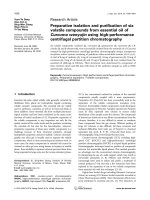
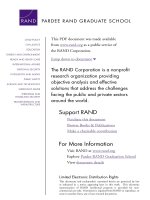
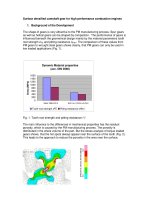
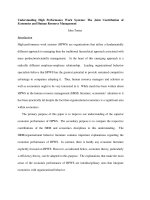
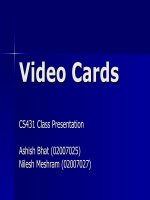

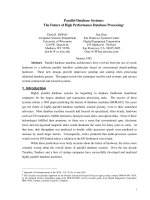
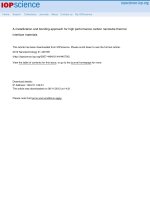
![acoustics for engineers [electronic resource] troy lectures](https://media.store123doc.com/images/document/14/y/lx/medium_lxa1401346385.jpg)
![adobe flex 4.5 fundamentals [electronic resource] training from the source](https://media.store123doc.com/images/document/14/y/xr/medium_xrp1401346566.jpg)